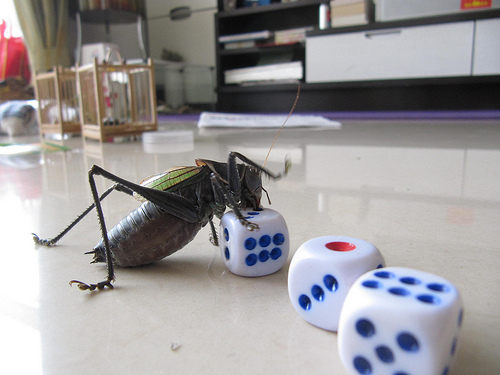Let’s take another view at the investing vs gambling argument. Typically, we tend to characterize stock market participants into two flavors:
Traders – they look to make regular profits from micro movements on a daily basis in a zero-sum trading game, or they look to make spectacular speculative gains in a short time on (for example) takeover targets.
Investors – they buy and hold what are supposedly solid dividend-paying businesses through thick and thin, apparently oblivious to market movements.
So Who’s Gambling?
Traders are often regarded as gamblers whereas investors are revered as more level-headed supporters of American (and international) companies. But who’s really gambling? In both cases you are hoping that your stock picks will go up in price or –- in the case of an investor –- hoping that they will at least not go down while the dividends are rolling in. No one buys a stock in the hope that its price will fall. But while a trader will admit to a loss by selling out (or more likely stopping out) as soon as a paper loss materializes, an investor will defer the pain until… the day before retirement. By the time an investor admits to their gamble not having paid off, it might be too late.
Why Choose?
You’ll now be thinking that I’m biased towards the trader mentality, and that I’m something of an investment skeptic, but I’m not religious about this at all. I think we can learn something from both camps by buying like a trader (resigned to stopping out for a small initial loss) while holding our profitable positions like an investor would (possibly “forever”).
 Thanks to Ivan Walsh for the pic!
Thanks to Ivan Walsh for the pic!
Introduction to Position Trading
In my Position Trading approach, I aim to establish a diverse portfolio of long-term equity positions. If any one of my exploratory positions falls in value, I’m not shy of stopping out for a small loss thanks to my tight initial stop loss order and small position size. If any one of my small exploratory positions rises in value, I’m equally not shy of holding on and pyramiding up (i.e. increasing my position size) as long as I can lock-in some of my accrued profit using a wider stop order along the way.
I aim to cut the weeds and water the flowers –- by cutting my losses and running my profits –- rather than the more destructive process of cutting the flowers and watering the weeds.
While the style of trading known as “Position Trading” is often described as “holding a stock position for a number of weeks, months, or even years” I also like to define it in terms of the following analogy:
Imagine a horse race in which the runners and riders are constantly jostling for position. In this race you can bet on any or all of the racers at the start, or during the race. You can increase your stakes on the likely winners, and remove your bets from the laggards and fallers, at any time during the race. By the end of the race-for-your-investing-life you hope to have accumulated your biggest bets on those horses placed 1st, 2nd and 3rd.
A Long-Term Investment is a Short-Term Trade Gone Well!
You have probably heard the phrase “a long-term investment is a short-term trade gone wrong”. It refers to our tendency to hold on to a losing stock position for as long as it takes to recover… or so we hope! My preferred position trading approach turns this phrase on its head by suggesting that “a long-term investment is a short-term trade gone well!”
Copyright © 2011 The Digerati Life. All Rights Reserved.

{ 1 comment… read it below or add one }
I’ll be looking up this subject further — I kind of like the concept of using trading concepts with a long term view. And just want to figure out ways to refine my methodologies.